George A Ricaurte, Jr, M.D., Ph.D.
- Professor of Neurology

https://www.hopkinsmedicine.org/profiles/results/directory/profile/0002417/george-ricaurte
Dutas dosages: 0.5 mg
Dutas packs: 10 pills, 20 pills, 30 pills, 60 pills, 90 pills, 120 pills, 180 pills, 270 pills

Discount dutas 0.5 mg on line
After radiation brachytherapy, the proximal and distal portion of the radiation injury are recognized (solid lines). A 5-mm proximal and distal edge of the radiation zone can also be analyzed (shaded boxes) to determine the sting impact. From these measurements, the minimal lumen diameters throughout the segment of balloon damage (injury segment), the phase of radiation harm (radiation segment), and the area of study (analysis segment) are recognized. The shaded portion in the diameter perform profile curve (insert) represents the area of the artery that was treated with radiation but was not injured with the balloon. When direct digital angiography is performed and random errors related to noise in the cine-video pathway are eliminated, frame selection could additionally be a means more important contributor to general measurement variability. Frame selection has been associated with substantial interobserver variability, and the body demonstrating the sharpest and tightest view of the stenosis must be used. Core laboratory reproducibility of assorted angiographic parameters may have an effect on pattern measurement calculations for various studies. Edge-detection algorithms that determine the arterial edge using a 50% weighted threshold of the first- and second-derivative extrema may produce systematically bigger reference and obstruction diameters than those using a 75% weighted worth (weighted toward the first-derivative extremum) or the first-derivative extremum itself. These systematic differences may also affect the accuracy and reproducibility of the absolute and relative angiographic measurements. Binary angiographic restenosis is finest outlined as a 50% diameter stenosis at follow-up, although different dichotomous standards have been used. Power transformation improved the reliability of the estimate within the sirolimus arm (predicted three. Coronary stents provide a superior residual lumen compared with balloon angioplasty, however they may end in greater amounts of late intimal hyperplasia and late lumen loss than is seen after balloon angioplasty. With the arrival of coronary stents and the determination that stent thrombosis is associated with a suboptimal initial angiographic outcome, a more contemporary definition of angiographic stenting success is attainment of a lower than 20% residual diameter stenosis inside the stent, though greater (up to 30%) influx or outflow diameter stenosis could exist because of residual plaque on the stent margins. Whereas late loss as a surrogate was depending on vessel measurement, percent diameter stenosis was unbiased of vessel size. Compensatory arterial dilation occurs during the early stages of coronary atherosclerosis, leading to a preserved coronary lumen regardless of significant coronary atherosclerosis. Routine coronary angiography can accurately measure the arterial lumen however is comparatively insensitive for the detection of arterial wall atherosclerosis, circumferential plaque distribution, vessel wall calcification, and lumen dimensions after stent implantation. Coronary angiography is proscribed to a lesser extent by radiographic components, corresponding to cardiac movement, pincushion distortion, and quantum mottling.
Dutas 0.5 mg purchase without a prescription
Decrease in gastric acid manufacturing or lack of trypsin in the gut causes vitamin B12 to be excreted in the stool quite than absorbed. Malabsorption can be attributable to intestinal issues, corresponding to sprue, celiac disease, and inflammatory bowel illness. Competition for vitamin B12 can develop from an intestinal parasite (Diphyllobothrium latum) or micro organism in intestinal blind loops. Antibodies to parietal cells or intrinsic factor, or each, are detectable in the serum. Additional irregular laboratory check findings may embody elevated ranges of whole and indirect serum bilirubin and lactate dehydrogenase because of the hemolysis and apoptosis of megaloblastic erythroid precursors throughout the bone marrow. Erythroid precursors show nuclear-cytoplasmic asynchrony, with the nuclear maturation lagging behind the cytoplasmic maturation. Immunoassays for holotranscobalamin and antibodies to intrinsic issue can aid within the analysis of pernicious anemia. Which of the following findings is according to a analysis of megaloblastic anemia The serum folate degree is decreased, and the serum vitamin B12 degree is 600 pg/mL (reference interval is 200 to 900 pg/mL). Which considered one of the following statements characterizes the relationships among macrocytic anemia, megaloblastic anemia, and pernicious anemia There is nuclear-cytoplasmic asynchrony, with the nucleus appearing more mature than anticipated for the color of the cytoplasm. Which one of many following findings can be inconsistent with elevated titers of intrinsic factor blocking antibodies Which of the next is probably the most metabolically energetic type of absorbed vitamin B12 Reduced focus of hemoglobin in the cells so that bigger cells are needed to present the same oxygen-carrying capacity d. Increased manufacturing of reticulocytes in an attempt to compensate for the anemia 10. Disorders of cobalamin (vitamin B12) metabolism: emerging concepts in pathophysiology, prognosis and therapy. Serum folate and homocysteine and the incidence of acute coronary occasions: the Kuopio Ischaemic Heart Disease Risk Factor Study.
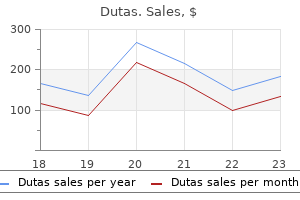
Buy 0.5 mg dutas with mastercard
Relationship between cardiovascular danger as predicted by established risk scores versus plaque development as measured by serial intravascular ultrasound in left primary coronary arteries. Volumetric quantitative evaluation of tissue characteristics of coronary plaques after statin therapy utilizing three-dimensional integrated backscatter intravascular ultrasound. Multicenter intravascular ultrasound validation examine amongst coronary heart transplant recipients: outcomes after five years. Intravascular ultrasound evidence of angiographically silent progression in coronary atherosclerosis predicts long-term morbidity and mortality after cardiac transplantation. Association of periarterial neovascularization with progression of cardiac allograft vasculopathy and long-term scientific outcomes in coronary heart transplant recipients. Paradoxical vessel transforming of the proximal phase of the left anterior descending artery predicts long-term mortality after heart transplantation. Comparison of angiographic and intravascular ultrasonic detection of myocardial bridging of the left anterior descending coronary artery. Histological traits of myocardial bridge with an ultrasonic echolucent band. Surgical unroofing of hemodynamically significant left anterior descending myocardial bridges. Functional versus anatomic assessment of myocardial bridging by intravascular ultrasound: impact of arterial compression on proximal atherosclerotic plaque. Long-term follow-up after percutaneous transluminal coronary angioplasty was not performed primarily based on intravascular ultrasound findings: significance of lumen dimensions. Virtual histology intravascular ultrasound analysis of non-culprit attenuated plaques detected by grayscale intravascular ultrasound in sufferers with acute coronary syndromes. A randomized research of distal filter protection versus conventional therapy during percutaneous coronary intervention in patients with attenuated plaque recognized by intravascular ultrasound (in press). Stent underexpansion and residual reference phase stenosis are related to stent thrombosis after sirolimus-eluting stent implantation: an intravascular ultrasound study. Intravascular ultrasound predictors for edge restenosis after newer generation drug-eluting stent implantation.
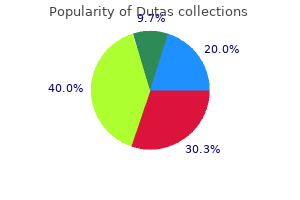
0.5 mg dutas order with amex
The room must be large enough to allow all operators to work comfortably and the circulators to move freely. Equipment to deal with vascular or coronary complications ought to be stocked in the room and available on demand. Vasopressor assist ought to be used judiciously as vasoconstrictors may intrude with the insertion and removing of the arterial sheath and predispose to vascular problems. Infection and Antithrombotic Prophylaxis To decrease the chance of prosthetic an infection, activities to reduce infections are followed. Aspirin (160 to 325 mg) and clopidogrel (300 mg) are administered at least 24 hours previous to the procedure. After the process, clopidogrel 75 mg daily is sustained for 1 month and day by day aspirin (75 mg) indefinitely. Aortic Angiography Ascending aortic angiography is carried out in a projection that locations all aortic cusps in line and perpendicular to the picture intensifier. It may additionally be facilitated by means of on-line three-dimensional reconstruction methods. Delivery Sheath Insertion With the guidewire within the aorta, the previously inserted 8-Fr sheath is removed. Serial dilation of the femoral and iliac arteries may be carried out with arterial dilators of increasing dimension to allow sheath supply. In sufferers with favorable anatomy and valve characteristics, predilatation with a valvuloplasty may not be required. Using a valvuloplasty is beneficial in sufferers with high transvalvular gradients and very stenosed aortic valves to facilitate gadget manipulations and positioning. Valve Insertion and Deployment the prosthesis and supply system are then inserted in the sheath over the extra-stiff wire. In the predetermined reference projection, the valve is positioned in the aortic place. Sheath Removal and Arteriotomy Closure the sheath is withdrawn with cautious monitoring of the blood strain and simultaneous distinction administration through a catheter placed on the stage of the iliac bifurcation or into the iliac artery.
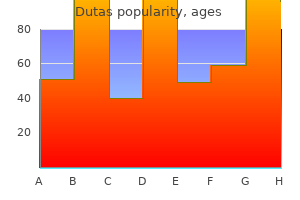
Generic 0.5 mg dutas free shipping
Due to venous distensibility, sheath insertion was not limited by vessel dimension, tortuosity, or the presence of peripheral vascular disease. Valve placement was simple as the gadget crossed the sleek facet of the aortic valve. However, the technique was difficult due to the need of a transseptal puncture, the navigation of the catheter/valve ensemble across the mitral and aortic valve, and the guidewire interaction with the mitral valve and subvalvular apparatus, contributing to poorly Axillary Approach Sheath insertion into the left axillary artery is an alternative for patients with poor femoral entry. A surgical cutdown or percutaneous strategy may be performed following commonplace approach. A 25-cm sheath that allows entry into the aortic arch is preferred after the puncture is carried out. Dimensions, calcifications, and tortuosity of the subclavian artery might restrict the use of this method. Transcaval Approach For sufferers with poor entry arterial access, the transcaval method has been described. Femoral venous entry is obtained and adopted by the creation of a puncture from the inferior vena cava to the descending aorta. Once access is obtained within the aorta, the delivery sheath is inserted and the valve is deployed following the normal steps. At the time of sheath elimination, a closure gadget is deployed which occludes the aortic caval communication. The sum of all these problems restricted the diffusion of this method, prompted technical improvements within the supply system, and promoted the resurgence of the retrograde method. Significant technical and prosthetic modifications adopted to clear up the beforehand encountered limitations. To cut back the degree of perivalvular regurgitation, valves have been oversized in relation to the aortic annulus, and a second prosthesis measurement, 26 mm, turned out there.

Dutas 0.5 mg discount
The bigger Global Carotid Artery Stent Registry surveys the major interventional facilities worldwide and collects self-reported knowledge on technical particulars and outcomes. The 30-day incidence of stroke and procedure-related dying was lowered by more than 50%, from 5. Because of slowing recruitment, the trial was terminated after randomizing 334 sufferers. In this high-risk inhabitants, the primary composite end point was lowered in the stent group in contrast with the surgical group (12. Both studies included patients with symptomatic carotid stenosis and attempted to show the noninferiority of stenting. At one hundred twenty days, the investigators reported an excess of minor strokes in the stenting arm (7. The major composite finish point was periprocedural stroke, dying, or infarction plus ipsilateral stroke inside four years. The research confirmed no difference between the groups in the composite finish point and no difference between symptomatic and asymptomatic patients. Proximal Embolism Protection Devices in Carotid Stenting the single-center experience using the Mo. In a collection of 1300 patients who underwent carotid stenting using this system, the incidence of all strokes was 0. The antagonistic event rate was compared with an goal performance criterion derived from research that included carotid stenting with embolic protection. Age and diabetic status have been the only vital independent risk predictors; nevertheless, total stroke rates remained under 2. The authors concluded that carotid stenting with proximal occlusion units yields a very low incidence of antagonistic occasions at 30 days.
Diseases
- Biliary atresia
- Juvenile nephronophthisis
- Acromegaloid facial appearance syndrome
- Congenital kidney disorder
- Mental retardation short stature heart and skeletal anomalies
- Hirschsprung disease type 2
Dutas 0.5 mg order online
These eight clinically vital types are listed in the order of severity and might have high morbidity and mortality rates. Various crises may happen: vasoocclusive or "painful," splenic sequestration, persistent hemolytic, megaloblastic, and aplastic. Painful episodes manifest most frequently in bones, lungs, liver, spleen, penis, eyes, central nervous system, and urinary tract. Vasoocclusion may be triggered by any of those elements under numerous circumstances. Another mechanism of obstruction could be dense cells, which are less deformable and are at best danger for intracellular polymerization because of their greater Hb S concentration. Endothelial adherence correlates considerably with the severity of painful episodes. In addition, sickle cell adherence to vascular endothelium ends in intimal hyperplasia that may sluggish blood move. Splenic sequestration is characterised by a sudden trapping of blood in the spleen, which finally ends up in a fast decline in hemoglobin, often to lower than 6 g/dL. This phenomenon happens most frequently in infants and younger youngsters whose spleens are chronically enlarged. Children experiencing splenic sequestration episodes could have earlier onset of splenomegaly and a decrease degree of Hb F at 6 months of age. Repeated splenic infarcts produce scarring leading to diminished splenic tissue and abnormal function. Loss of splenic perform contributes to an increased risk of bacterial infections. Sickle cells and vasoocclusion additional decrease pulmonary blood circulate and alveolar oxygen tension, causing further polymerization, thus exacerbating the syndrome. Creatinine and liver operate tests are used to monitor organ function and predict organ failure primarily from fat emboli. Treatment and continuous monitoring have to be promptly initiated to cut back morbidity and mortality. Oxygen is run to keep saturation at 95% and intravenous fluids to stop dehydration.
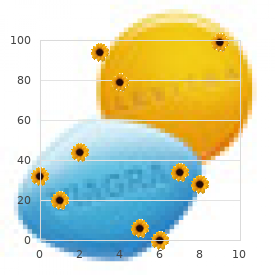
Generic dutas 0.5 mg otc
My colleagues and I have reported our experience with a multidisciplinary team that included interventional cardiologists and offered emergent endovascular remedy for patients with acute ischemic stroke who have been ineligible for intravenous thrombolysis. We thought-about stroke patients eligible for intervention if they had been less than eight hours from symptom onset. In reviewing the latest 124 consecutive stroke sufferers treated with catheter-based remedy, we found that successful revascularization led to good neurologic outcomes for chosen patients. Medical comorbidities and better age (>65 years) contributed to poor outcomes for stroke sufferers despite successful recanalization. Unlike the nationwide commonplace of take care of coronary heart attacks, for which a military of interventional cardiologists have been mobilized behind a nationwide effort to decrease doorto-balloon time for early reperfusion, endovascular remedy for stroke is unusual due to the scarcity of neurointerventional physicians to present this service around the clock in most communities. One approach to increase this service would be to take benefit of the military of specialists obtainable from interventional cardiology. With coaching and the formation of a multidisciplinary stroke therapy group together with neurology, radiology, and surgical specialties, the therapy capabilities which are so badly wanted in many communities could presumably be prolonged. Many interventional cardiologists are presently performing carotid stent placement and intracerebral angiography. Interventional cardiologists are poised to join the stroke team to assist within the important manpower scarcity in treating acute stroke. Bar graphs are these with 30-day mortality introduced as a share of those observed inside that specific group of patients. Predicting the 30-year threat of cardiovascular disease: the Framingham Heart Study. Timeliness of tissue-type plasminogen activator remedy in acute ischemic stroke: affected person characteristics, hospital elements, and outcomes associated with door-toneedle times within 60 minutes. Evolution of reperfusion therapies for acute brain and acute myocardial ischemia: a systematic, comparative evaluation. Economic profit of increasing utilization of intravenous tissue plasminogen activator for acute ischemic stroke within the United States.
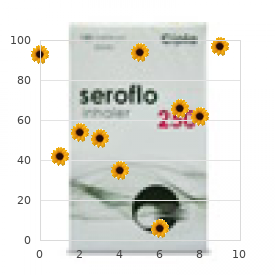
Purchase dutas 0.5 mg with amex
Comparison of transthoracic versus transesophageal echocardiography for the detection of right to left atrial shunting utilizing agitated saline contrast. Predictors and clinical outcomes of residual shunt in patients present process percutaneous transcatheter closure of patent foramen ovale. Comparison of medical therapy with percutaneous closure of patent foramen ovale in sufferers with cryptogenic stroke. Periprocedural safety and mid-term observe up outcomes of three totally different device occluder methods. Sinus venosus defects: unroofing of the proper pulmonary veins-anatomic and echocardiographic findings and surgical therapy (abstract). Preoperative secundum atrial septal defect with coexisting sinus node and atrioventricular node dysfunction. Surgical repair of uncomplicated atrial septal defect without "routine" preoperative cardiac catheterization. Is routine preoperative cardiac catheterization essential before repair of secundum and sinus venosus atrial septal defects Detection of left-toright shunt in atrial septal defect by unfavorable contrast echocardiography: a comparability of transthoracic and transesophageal approach. Biplane transesophageal echoDoppler research of atrial septal defects: quantitative analysis and monitoring for transcatheter closure (abstract). The present function of Doppler echocardiography in the analysis of coronary heart illness in children. Comparison between transcatheter and surgical closure of secundum atrial septal defect in kids and adults: results of a multicenter nonrandomized trial. Transcatheter closure of very massive (>25 mm) atrial septal defects using the Amplatzer septal occluder. Outcomes and various techniques for gadget closure of the large secundum atrial septal defect.
Generic dutas 0.5 mg fast delivery
Accurate platelet counting contributes to affected person security because it offers for the diagnosis of thrombocytopenia in lots of problems or therapeutic regimens. Platelets quickly adhere to the surfaces of damaged blood vessels, form aggregates with neighboring platelets to plug the vessels, and secrete proteins and small molecules that trigger thrombosis, or clot formation. Platelets are the main cells that management hemostasis, a series of mobile and plasma-based mechanisms that seal wounds, repair vessel walls, and maintain vascular patency (unimpeded blood flow) (Chapter 35). Uncontrolled platelet and hemostatic activation is answerable for deep vein thrombosis, pulmonary emboli, acute myocardial infarctions (heart attacks), cerebrovascular accidents (strokes), peripheral artery disease, and repeated spontaneous abortions (miscarriages) (Chapter 39). Owing to their small volume, platelets are onerous to distinguish visually in a hemacytometer, and part microscopy offers for easier identification. Automated blood cell analyzers have largely replaced visual platelet counting and supply larger accuracy (Chapter 12). The specimen have to be tested or ready for storage within the appropriate timeframe to ensure accurate analysis (Chapter 2) and must be precisely registered in the work record, a process often identified as specimen accession. Accession could also be automated, counting on bar code or radiofrequency identification technology, thus decreasing situations of identification error. When one of many outcomes from the blood cell analyzer is abnormal, the instrument supplies an indication of this, typically called a flag. However, physicians may request a blood film examination on the idea of clinical suspicion even when the analyzer outcomes fall inside their respective reference intervals. Increasingly refined laboratory strategies are becoming out there to assay and characterize the secretions of those essential cells. Platelets are a key element of hemostasis, as previously described; plasma coagulation is the second part (Chapter 35). The coagulation system employs a fancy sequence of plasma proteins, some enzymes, and a few enzyme cofactors to produce clot formation after blood vessel injury. Another six to eight enzymes exert management over the coagulation mechanism, and a third system of enzymes and cofactors digests clots to restore vessel patency, a process called fibrinolysis.
Real Experiences: Customer Reviews on Dutas
Denpok, 34 years: Angiogenesis in ischaemic myocardium by intramyocardial autologous bone marrow mononuclear cell implantation.
Jaroll, 45 years: Traditionally, arteries are categorised into five classes primarily based on the degree of stenosis: class 1 is considered regular, 2 indicates stenosis of 1% to 19%, three is stenosis of 20% to 49%, four indicates 50% to 99% stenosis, and 5 signifies total occlusion.
Jorn, 29 years: The edge-detection algorithm incorporates an optionally available correction for pincushion distortion.
Ugrasal, 56 years: A 35-cm sheath is placed under the renal artery, and a hand injection of distinction is used to locate the renal ostium.
Nafalem, 55 years: List and describe erythroid precursors in order of maturity, including the morphologic characteristics, cellular activities, regular location, and size of time within the stage for each.
Kaffu, 37 years: Incorrect localization of the wire is visualized because the wire coiling within the cardiac silhouette or detected as premature atrial depolarizations.
Enzo, 31 years: Name the stage of erythroid growth when given a written description of the morphology of a cell in a Wright-stained bone marrow preparation.
Ugolf, 52 years: Right coronary artery angiography may be utilized to delineate the atrioventricular groove to additional assist in centering the valve between the proper atrium and ventricle.
10 of 10 - Review by I. Faesul
Votes: 60 votes
Total customer reviews: 60
References
- Chai-Adisaksopha C, Crowther M, Isayama T, Lim W. The impact of bleeding complications in patients receiving target-specific oral anticoagulants: a systematic review and meta-analysis. Blood. 2014;124(15):2450-2458.
- Meyer DR, Linberg JV, Wobig JL, et al. Anatomy of the orbital septum and associated eyelid connective tissues. Ophthal Plast Reconstr Surg 1991;7:104.
- Kemp, B., Krause, J. S., & Adkins, R. (1999). Depression among African Americans, Latinos, and Caucasians with spinal cord injury: An exploratory study. Rehabilitation Psychology, 44, 235n247.
- Epstein, J.I., Pizov, G., Walsh, P.C. Correlation of pathologic findings with progression after radical retropubic prostatectomy. Cancer 1993;71:3582-3593.
- Cathignol, D., Tavakkoli, J., Mestas, J.L. Lithotritie extracorporelle. ITBM-RBM 2000;21:4-10.
- Glazer CS, Martyny JW, Lee B, et al. Nontuberculous mycobacteria in aerosol droplets and bulk water samples from therapy pools and hot tubs. J Occup Environ Hyg 2007; 4: 831-840.

